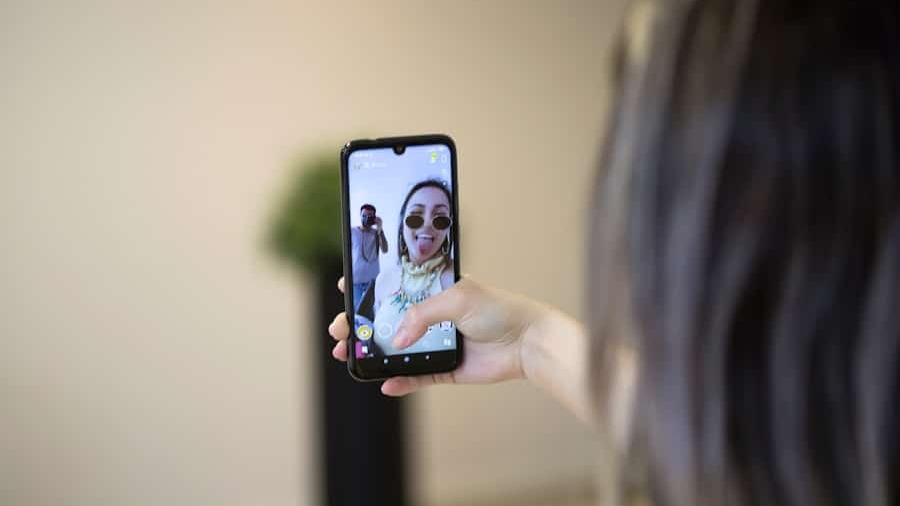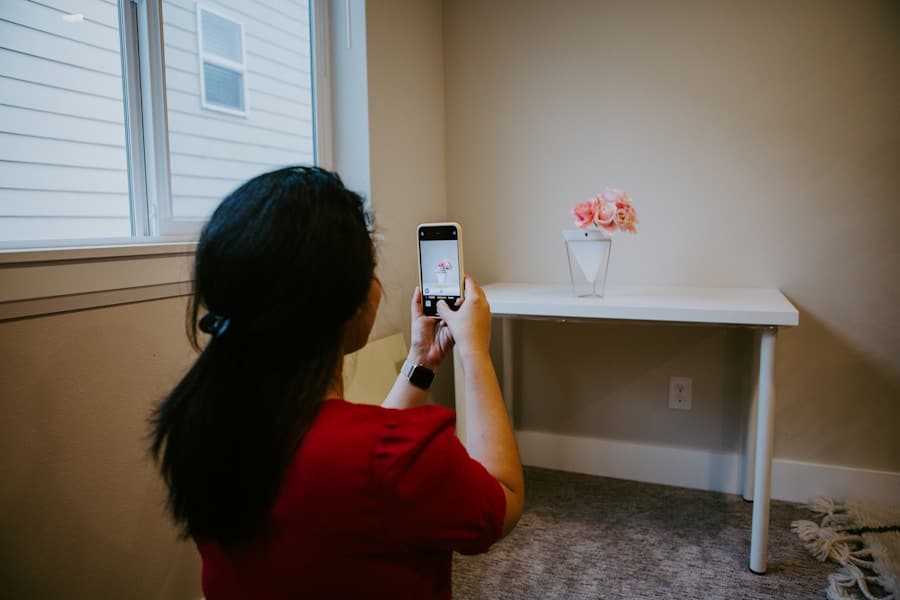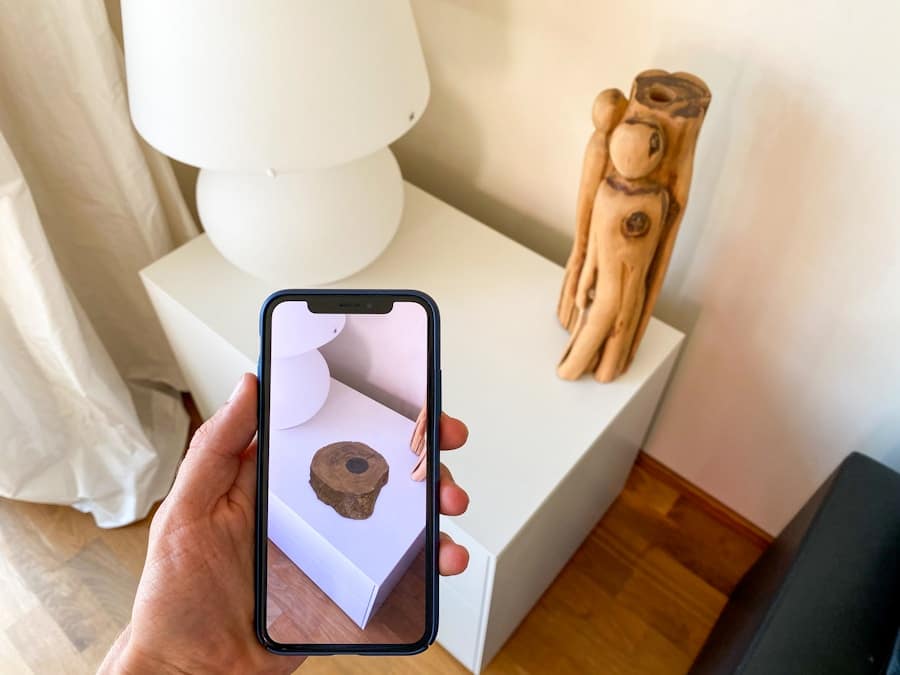Augmented Reality (AR) has emerged as a transformative technology, reshaping various industries, including home décor and interior design. By overlaying digital information onto the physical world, AR allows users to visualize how furniture, colors, and accessories will look in their own spaces before making a purchase. This innovative approach not only enhances the shopping experience but also empowers consumers to make informed decisions about their home environments.
As the demand for personalized and unique living spaces continues to grow, AR stands at the forefront of this evolution, offering tools that cater to individual tastes and preferences. The integration of AR into home décor is not merely a trend; it represents a significant shift in how consumers interact with products. Traditional methods of shopping for home furnishings often involve guesswork and imagination, leading to uncertainty and dissatisfaction.
In contrast, AR provides a tangible solution by allowing users to visualize products in real-time within their own homes. This capability not only fosters creativity but also builds confidence in purchasing decisions, ultimately leading to a more satisfying home design experience.
Key Takeaways
- AR in home décor and interior design is revolutionizing the industry by offering personalized and interactive experiences for customers.
- Using AR for personalized home décor provides benefits such as visualization of products in real-time, customization options, and improved decision-making.
- AR enhances the customer experience in interior design by allowing them to virtually try out different furniture and accessories in their own space before making a purchase.
- AR plays a significant role in customizing furniture and home accessories by offering virtual customization options and personalized recommendations.
- There are various AR tools and apps available for personalized home décor, offering features such as virtual room design, product visualization, and customization options.
How AR is Revolutionizing the Home Décor Industry
The home décor industry has long been characterized by its reliance on physical showrooms and catalogs, which can limit consumer engagement and creativity. However, AR is revolutionizing this landscape by bridging the gap between digital and physical experiences. Retailers are increasingly adopting AR technology to create immersive shopping experiences that allow customers to see how products will fit into their existing spaces.
For instance, companies like IKEA have developed AR applications that enable users to place virtual furniture in their homes using their smartphones or tablets. This not only enhances the shopping experience but also reduces the likelihood of returns due to mismatched expectations. Moreover, AR is facilitating a more interactive and engaging approach to home design.
Consumers can experiment with different styles, colors, and layouts without the need for physical samples or extensive planning. This flexibility encourages exploration and creativity, allowing individuals to envision their ideal living spaces more vividly. As a result, AR is not just a tool for visualization; it is a catalyst for innovation within the home décor industry, prompting brands to rethink their marketing strategies and product offerings.
The Benefits of Using AR for Personalized Home Décor
One of the most significant advantages of using AR in home décor is its ability to provide personalized experiences tailored to individual preferences. With AR applications, users can customize furniture dimensions, colors, and materials to suit their specific needs. This level of personalization was previously challenging to achieve through traditional retail channels, where options were often limited to pre-defined selections.
By leveraging AR technology, consumers can create unique designs that reflect their personal style and enhance their living spaces. Additionally, AR facilitates a more efficient decision-making process. When consumers can visualize how a piece of furniture will look in their home environment, they are more likely to make confident purchasing decisions.
This reduces the time spent deliberating over choices and minimizes the risk of buyer’s remorse. Furthermore, the ability to see products in context allows users to consider factors such as scale and proportion more effectively, leading to better overall design outcomes.
How AR is Enhancing the Customer Experience in Interior Design
The customer experience in interior design has been significantly enhanced through the integration of AR technology. Traditionally, interior designers relied on mood boards and physical samples to convey their visions to clients. However, with AR, designers can create immersive presentations that allow clients to visualize proposed designs in real-time.
This interactive approach fosters collaboration between designers and clients, enabling them to make adjustments on-the-fly based on immediate feedback. Moreover, AR tools can streamline the design process by providing clients with a clearer understanding of spatial relationships and design elements. For example, a designer can use AR to demonstrate how different color palettes or furniture arrangements will impact the overall aesthetic of a room.
This not only helps clients feel more involved in the design process but also empowers them to express their preferences more effectively. As a result, the use of AR in interior design enhances communication and trust between designers and clients, ultimately leading to more successful project outcomes.
The Role of AR in Customizing Furniture and Home Accessories
AR technology plays a pivotal role in the customization of furniture and home accessories, allowing consumers to tailor products to their specific tastes and requirements. Many furniture retailers now offer AR applications that enable users to modify aspects such as size, color, fabric, and finish before making a purchase. This level of customization was once limited to high-end bespoke services but is now accessible to a broader audience thanks to advancements in AR technology.
For instance, companies like Wayfair have developed AR features that allow customers to visualize how different upholstery options will look on a sofa or chair within their own living space. This capability not only enhances the shopping experience but also encourages consumers to invest in pieces that truly resonate with their personal style. By providing an interactive platform for customization, AR empowers consumers to take ownership of their design choices and create spaces that reflect their individuality.
AR Tools and Apps for Personalized Home Décor
Visualizing Products in Real-Time
Notable applications like Houzz and IKEA Place allow users to browse millions of home design photos and visualize products in their own spaces using AR technology. This feature enables users to select items from the marketplace and see how they would look in their homes before making a purchase decision.
This app allows homeowners and designers alike to experiment with different layouts and configurations without the need for extensive measurements or physical alterations.
Empowering Consumers to Take an Active Role
These AR tools not only improve the shopping experience but also encourage creativity and experimentation among users. By providing access to a wide range of design options and visualizations, AR applications empower consumers to take an active role in shaping their living environments.
The Future of AR in Home Décor and Interior Design
As technology continues to evolve, the future of AR in home décor and interior design looks promising. One potential development is the integration of artificial intelligence (AI) with AR applications, allowing for even more personalized recommendations based on user preferences and behaviors. For example, AI algorithms could analyze a user’s past purchases or design choices to suggest complementary products or styles that align with their aesthetic.
Furthermore, advancements in hardware technology may lead to more sophisticated AR experiences through wearable devices such as smart glasses. Imagine walking through your home while wearing augmented reality glasses that overlay design suggestions directly onto your environment in real-time. This level of immersion could revolutionize how consumers interact with their living spaces and make design decisions.
Additionally, as sustainability becomes an increasingly important consideration for consumers, AR could play a role in promoting eco-friendly choices within home décor. By visualizing sustainable materials or energy-efficient designs through AR applications, consumers may be more inclined to make environmentally conscious decisions when furnishing their homes.
Case Studies: Successful Implementation of AR in Personalized Home Décor
Several companies have successfully implemented AR technology into their business models, showcasing its potential within the personalized home décor sector. One prominent example is Lowe’s Holoroom How To, an immersive experience that combines virtual reality (VR) with augmented reality for DIY enthusiasts. Customers can learn how to complete home improvement projects while visualizing tools and materials in a simulated environment before attempting them in real life.
Another case study is the collaboration between furniture retailer West Elm and augmented reality platform Modsy. Through this partnership, West Elm customers can use Modsy’s technology to visualize how various West Elm products will look in their homes based on 3D renderings of their actual spaces. This collaboration not only enhances customer engagement but also drives sales by providing consumers with a clear vision of how products will fit into their lives.
By embracing innovation and prioritizing user experience, these brands are setting new standards for personalization within the industry while paving the way for future advancements in augmented reality applications.
In a related article discussing the importance of technology in various aspects of our lives, Enicomp explores the benefits of utilizing ERP software for subscription-based businesses. This article highlights the efficiency and organization that ERP systems can bring to companies looking to streamline their operations. To read more about how ERP software can revolutionize subscription-based businesses, check out this article.
FAQs
What is AR?
AR stands for Augmented Reality, which is a technology that superimposes digital information such as images, videos, or 3D models onto the real world environment, typically viewed through a smartphone or tablet.
How is AR used in personalized home décor and interior design?
AR is used in personalized home décor and interior design to allow users to visualize how furniture, décor, and other design elements will look in their own space before making a purchase. This can help users make more informed decisions and create a more personalized and cohesive design for their home.
What are the benefits of using AR in home décor and interior design?
Some benefits of using AR in home décor and interior design include the ability to visualize products in a real-world context, the ability to try out different design options without making a commitment, and the potential for a more personalized and tailored design experience.
What are some examples of AR applications in home décor and interior design?
Some examples of AR applications in home décor and interior design include virtual furniture placement tools, virtual paint color testers, and virtual room design tools that allow users to see how different design elements will look in their own space.
Is AR widely used in the home décor and interior design industry?
AR is becoming increasingly popular in the home décor and interior design industry, with many retailers and design professionals incorporating AR technology into their products and services to provide a more interactive and personalized experience for their customers.



